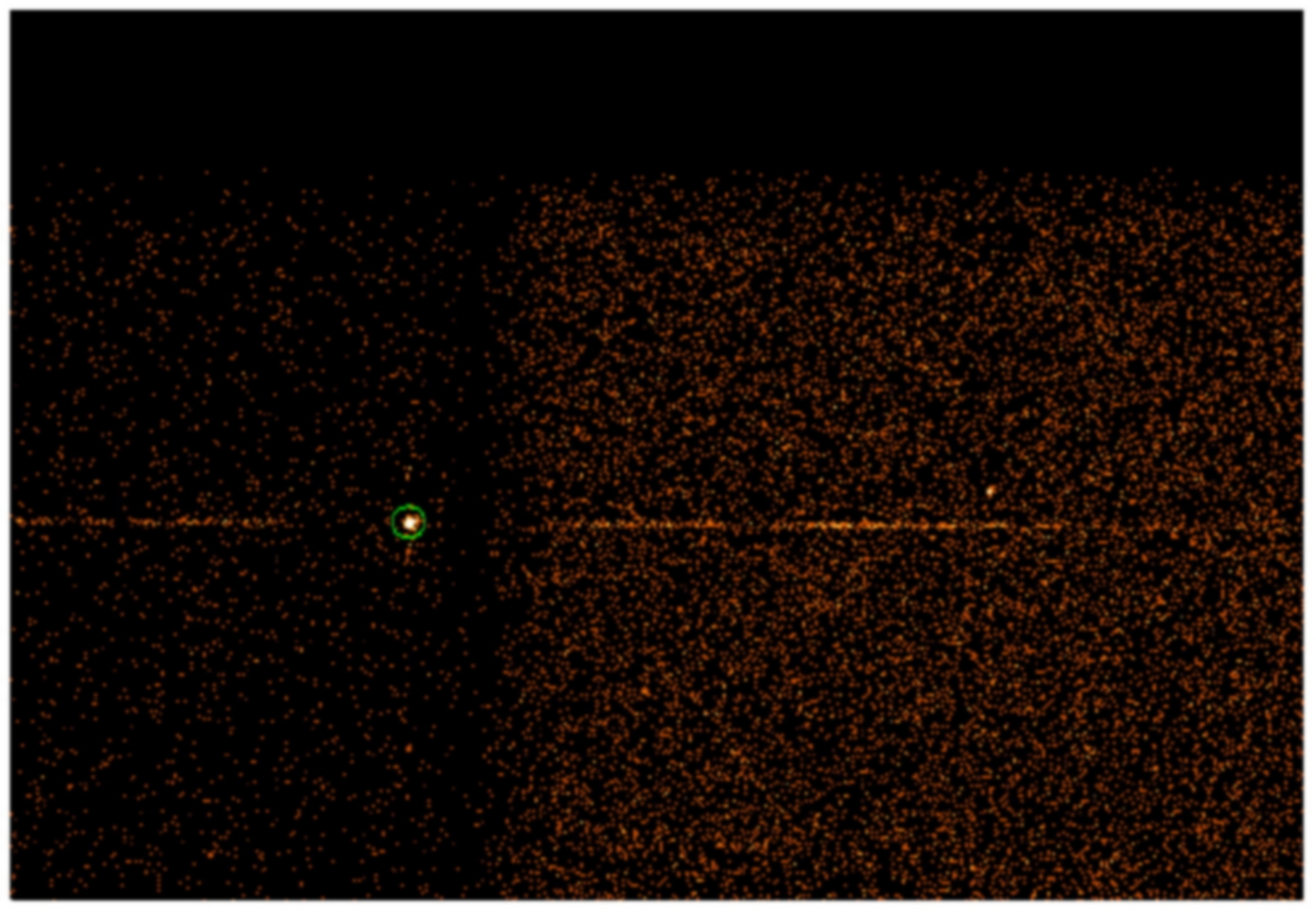
 Credit: N. Mirabal, F. Paerels, and J. P. Halpern, The Astrophysical Journal, 2003, Vol. 587, pg. 128
Credit: N. Mirabal, F. Paerels, and J. P. Halpern, The Astrophysical Journal, 2003, Vol. 587, pg. 128
After The Afterglow
A great deal of information
about those huge cosmic explosions called gamma ray bursts result not from the
study of the bursts themselves but from the burst's afterglow, the bright
emission (at X-ray and other wavelengths) which results as the explosion smashes
into the surrounding medium. Afterglow studies have helped astronomers determine
that GRB's are
associated with very distant galaxies, and by studying afterglows in detail,
astronomers hope to understand how the GRBs and their precursors affect their
environment. One of the most detailed ways in which astronomers can study GRB
afterglows is by high resolution X-ray spectroscopy. Discovery of emission lines
in such spectra can help astronomers understand how far away the burst is, how
violent the explosion was, and how the explosion (and its precursor
star) contaminates its environment with heavy elements like carbon, oxygen,
nitrogen and other atoms. The image above shows an observation of GRB 020405 (a
burst that occurred on April 5, 2002) by the Low Energy
Transmission Grating (LETG) on the Chandra X-ray observatory. The green
circle shows the location of the afterglow, while the dispersed spectrum is seen
as two horizontal streaks on either side of the afterglow image.
Last Week *
HEA Dictionary * Archive
* Search HEAPOW
* Education
Each week the HEASARC
brings you new, exciting and beautiful images from X-ray and Gamma ray
astronomy. Check back each week and be sure to check out the HEAPOW archive!
Page Author: Dr. Michael F. Corcoran
Last modified April 7, 2003


